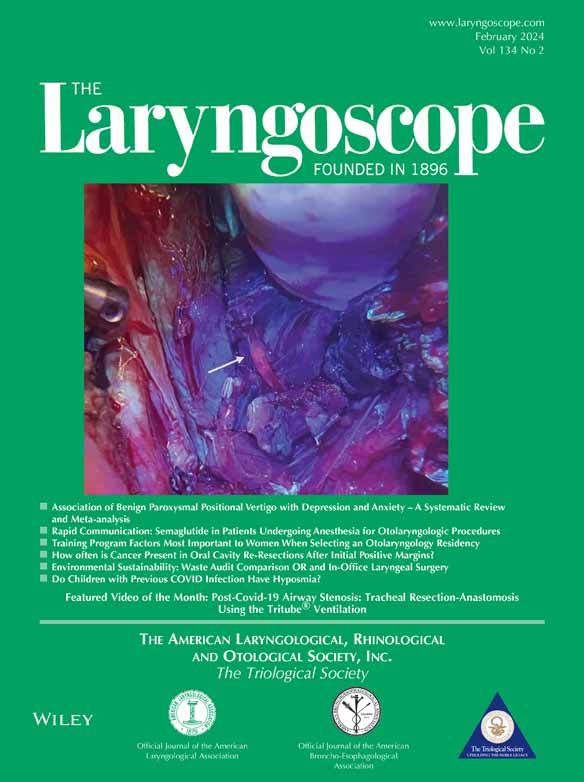The Relative Citation Ratio: An Impartial Assessment of Productivity in Academic Otolaryngologists
Presentation Status: Presented as a Poster Presentation at The Combined Otolaryngology Spring Meetings; Boston, MA USA; May 3–7, 2023.
The authors have no funding, financial relationships, or conflicts of interest to disclose.
Editor's Note: This Manuscript was accepted for publication on June 20, 2023
Abstract
Objectives
Quantification of academic productivity relies on bibliometric measurements, such as the Hirsch index (h-index). The National Institutes of Health (NIH) recently developed the relative citation ratio (RCR), an article-level, citation-driven metric that compares researchers with others within their respective fields. Our study is the first to compare the usage of RCR in academic otolaryngology.
Study Design
Retrospective Database Review.
Methods
Academic otolaryngology residency programs were identified using the 2022 Fellowship and Residency Electronic Interactive Database. Demographic and training data were collected for surgeons using institutional websites. RCR was calculated using the NIH iCite tool, and h-index was calculated using Scopus. Mean RCR (m-RCR) is the average score of the author's articles. Weighted RCR (w-RCR) is the sum of all article scores. These derivatives are a measure of impact and output, respectively. The career duration of a physician was categorized into the following cohorts: 0–10, 11–20, 21–30, and 31+ years.
Results
A total of 1949 academic otolaryngologists were identified. Men had higher h-indices and w-RCRs than women (both p less than 0.001). m-RCR was not different between genders (p = 0.083). There was a difference in h-index and w-RCR (both p less than 0.001) among the career duration cohorts, but there was no difference in m-RCR among the cohorts (p = 0.416). The faculty rank professor was the greatest for all metrics (p < 0.001).
Conclusion
Critics of the h-index argue that it is reflective of the time a researcher has spent in the field, instead of impact. The RCR may reduce historic bias against women and younger otolaryngologists.
Level of Evidence
NA Laryngoscope, 134:592–599, 2024




